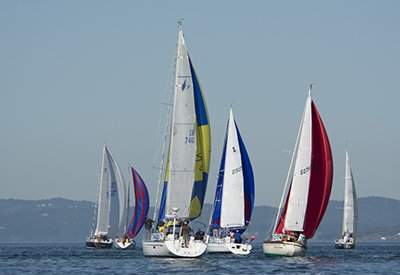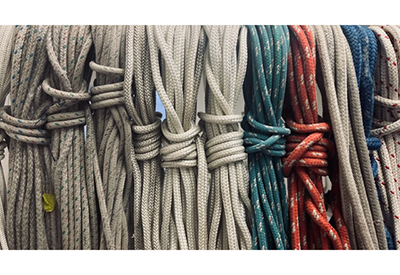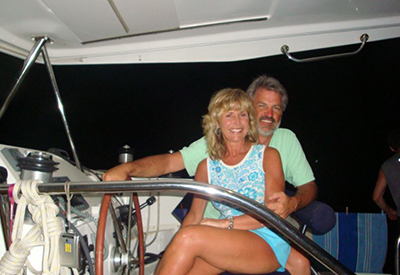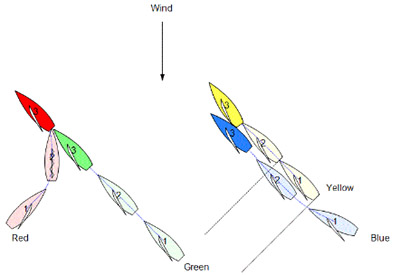Canals and Locks
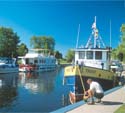
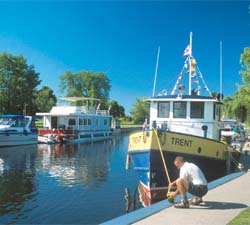 Waterways across the country where locks have been built to assist navigation are the St. Lawrence Seaway, the Trent-Severn Waterway (including the Murray Canal), the Rideau Waterway, the Ottawa River, the Richelieu River, the St. Peter’s Canal and the Canso Canal. Regulations and information regarding these waterways can be obtained from government offices and the lockmasters.
Waterways across the country where locks have been built to assist navigation are the St. Lawrence Seaway, the Trent-Severn Waterway (including the Murray Canal), the Rideau Waterway, the Ottawa River, the Richelieu River, the St. Peter’s Canal and the Canso Canal. Regulations and information regarding these waterways can be obtained from government offices and the lockmasters.
All craft using the locks, including dinghies in tow, must be either licensed or registered. The requirements for using the St. Lawrence Seaway, which is used by large vessels of every description, are more rigorous than those for the smaller canals and waterways. Pleasure craft of less than 6 metres in length, or less than 1 tonne in displacement, are not permitted to pass through the Seaway locks, in the interest of safety.
Traveling through canals and locks, like most boating activities, requires three basic things: knowledge, preparedness and courtesy. While all are important, I believe that the most important is courtesy. The room to maneuver in canals and especially locks is almost always limited and you are often sharing that limited space with others. Your guides and those responsible for your safety are the lockmasters and their assistants. It is your job to work together, under the direction of the lockmasters, with others who are sharing the system. You can travel in groups but maintain a working distance between vessels. Don’t travel too fast. You will only have to wait at the next lock for others to catch up. Be prepared to assist others. Since you will be sharing very close quarters, you and they may need assistance entering and exiting locks. You may require help from each other to avoid minor collisions and you may also have to tie up beside each other, gunwale to gunwale. All of this takes courtesy and a calm, considered approach to the whole process. Take the time to learn the rules and procedures, be prepared with the right equipment, follow the direction of the lockmasters and help others. Traveling through our canals and locks can be one of the most enjoyable boating experiences, so take the time to enjoy it. There are always lots of things to do and see and a surprising number of great destinations along the way. In this respect, consider cruising guides. They are filled with all kinds of helpful information and are great additions to your “must have aboard” list.
Other Considerations and Requirements
Several other important considerations apply to the use of canals and locks.
1. Water depth is limited at the locks and in many open reaches of the canal river systems. Be sure that the vessel’s draft does not exceed these limits.
2. While most bridges across the canals will lift or swing to allow vessels to pass, there may also be fixed bridges beneath which clearance is limited. Such maximum clearance affects sailboats particularly, and common practice on all except very small sailing craft is to unstep the mast and ship it aboard before attempting passage through the canal.
3. Large-scale charts are available for the Trent-Severn and Rideau Waterways in “strip chart” form. These charts show, in great detail, all the information required for safe navigation.
4. While in a lock, every vessel is under direction of the lockmaster. Responsibility for the safety of the vessel and crew remains with the skipper. In the Trent-Severn and Rideau Waterways, the lockmaster will record the license number or registration of every vessel passing through. A fee is payable for passage through the locks, to be paid at any lock. Fees are also payable for passage through the St. Lawrence Seaway locks.
5. Precautions against fire and explosion are mandatory. Open flames, smoking, engine and generator operation, etc., are prohibited.
6. Canal regulations require that certain specified items of gear be carried aboard small craft, such as mooring lines adequate for use in the locks of the canal. Extra fenders and fender boards are recommended, as some of the lock walls are very rough. Regulations require that all fenders and fending material must be buoyant. Non-buoyant material such as automobile tires may interfere with the gate or valve machinery if lost in the lock. The regulations should be read carefully, and all required equipment placed on board.
7. A signal to request opening of a bridge or lock is unnecessary since the bridge masters and lockmasters are alert to oncoming traffic and well able to judge the requirements of small vessels. If it is planned to tie up without passing a bridge, fenders over the side may assist the bridge keeper to anticipate the boat operator’s intentions. A boat should not tie up at the approach wall reserved for vessels waiting to lock through, unless it intends to pass through. This area is often designated by a “Blue Line”. In the St. Lawrence Seaway, communication with the lockmaster requires the use of VHF marine radio (Channel 12 or 14), although in some cases a shore telephone is provided for convenient direct communication by skippers of pleasure craft not equipped with radiotelephone. Transit through some locks is controlled by signal lights.
Lock Operation
A lock is essentially a watertight chamber situated between two sections of canal that are at different elevations. At each end of the chamber is a pair of gates, which are watertight when closed, but can be opened in the direction of the higher water level when necessary. The chamber is fitted with passages and valves by which water can be admitted to the chamber from the higher (upstream) level, or allowed to drain from the chamber to the lower (downstream) level. At both the upstream and downstream approaches to the lock are seawalls to which vessels may moor while awaiting passage, or after passage through the lock. While the lock is being filled or emptied, the current above or below it may be very strong, and mooring lines may come under considerable stress.
The operation of the lock for a down bound vessel involves filling the lock to the level of the water in the portion of canal above the lock, opening one or both upper gates to allow the vessel to enter the lock, closing the upper gates, and then draining the lock until its water level drops to the level of the water in the portion of canal below the lock. The lower gate or gates are then opened, and the vessel leaves the lock. An upbound vessel is handled in a similar manner: once the vessel enters the lock from the lower portion of the canal, the lower gates are closed and water is allowed to enter the lock from the upper portion of the canal, filling the lock until its water level rises to match the upper portion of the canal; the upper gates can then be opened so that the vessel can exit. The skipper of a vessel should be aware that while a lock is being filled, severe turbulence frequently occurs inside it, and the vessel may require vigorous fending-off from the lock walls. Alternatively, the emptying of a lock presents little or no difficulty for the vessels within it since turbulence is minimal.
Locks should be entered and left at “dead slow” speed. When entering a lock, the skipper may encounter unexpected crosswinds, find the mooring space tight, or learn that the vessel must be rafted against another already in the lock. These are normal situations, and the necessary action should be taken promptly, with the appropriate gear on deck and ready for use. It is common practice to secure to chains or plastic-coated cables running vertically on the inside wall of the lock, rather than attempt to moor to bollards along the top of the lock wall. A line is passed behind a chain near the bow, and another near the stern. These lines must be hand-held, so that as the vessel rises or descends, the line can be easily slipped up or down around the chain as required while the vessel is held close to the walls. Occasionally, some other provision is made to serve the purpose of chains; in any case, constant attention to the lines is required by the crew while the water level is changing. Reaching poles can be very helpful but try and avoid using them to hook on to the aforementioned chains or cables. The reaching pole can easily be pulled unexpectedly from your hands by the weight of the moving boat. Poles are best used to fend you off the wall or other boats. When using them as a reaching aid be sure you have a firm grip and can maintain good balance. Gloves are an excellent idea when locking through any lock. Locks can be very messy and gloves will also help prevent rope burn.
Lift Locks and Marine Railways
On the Trent Severn Waterway you will find two different types of locking systems, the lift lock and marine railway. They are unique in their method of operation but the procedures that the boater uses to enter and exit is very similar to those mentioned above.
Lift locks, located in Peterborough and Kirkfield, are essentially two large tubs filled with water with gates at either end. The tubs are attached to large hydraulic rams. Boats enter the tubs at the top and bottom; then the gates are closed and securely locked. The upper tub is filled with slightly more water so it weighs more than the lower tub. A valve is opened which allows the upper tub to lower forcing the lower tub to rise. Complete details describing how and when these engineering marvels were built and how they operate are available at both locks. There is also a visitor centre at the Peterborough Lift Lock, the largest working lock of its kind in the world, which offers photos of the locks being built, models, exhibits and audio visual presentations.
The marine railway, located at Big Shute near the Georgian Bay end of the Trent Severn Waterway, is the largest of its kind in North America. Boats enter the railway at either end and are then placed securely in slings by attendants. The railway raises or lowers the boats which then float off at the other end. Operation is simple but, as with any lock, boaters must follow the directions of the lockmasters and assistants.
Permission was given by Canadian Power & Sail Squadrons to take much of this information, including illustrations from their Boating Course. If you enjoyed this article and want more information go to www.cps-ecp.ca

